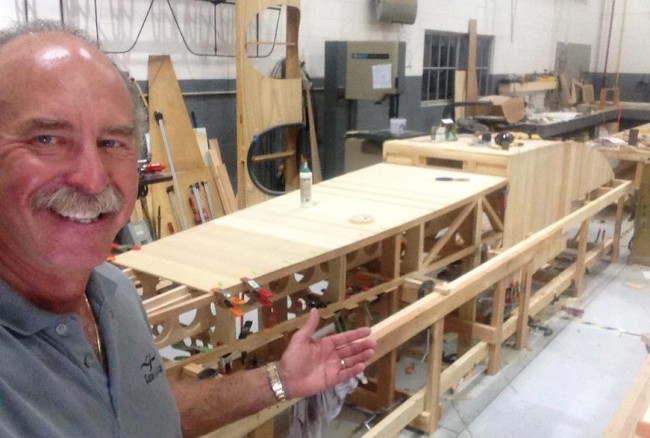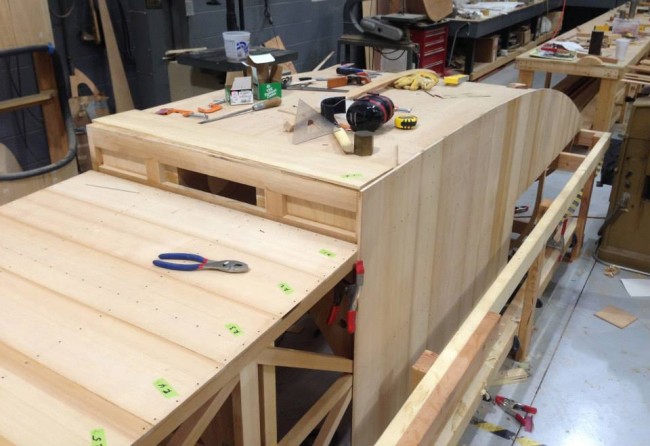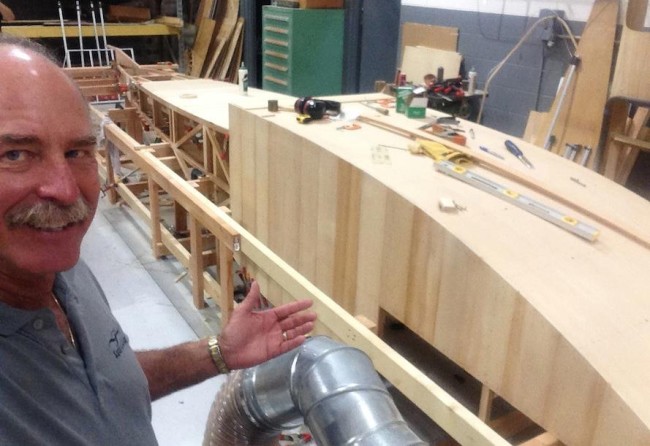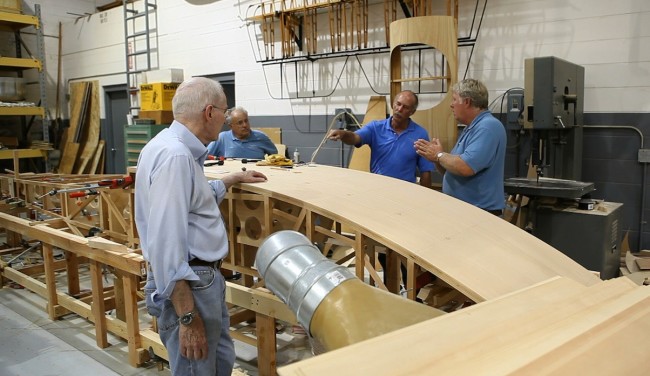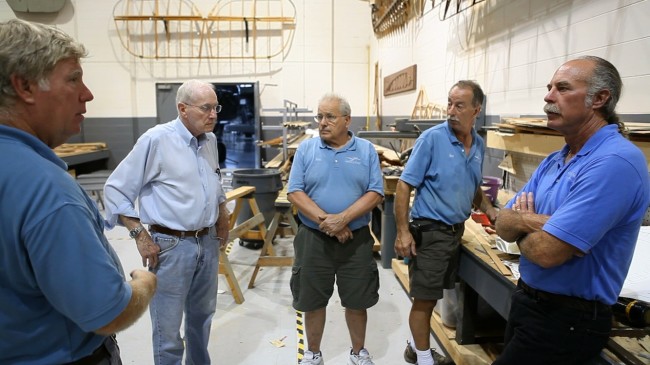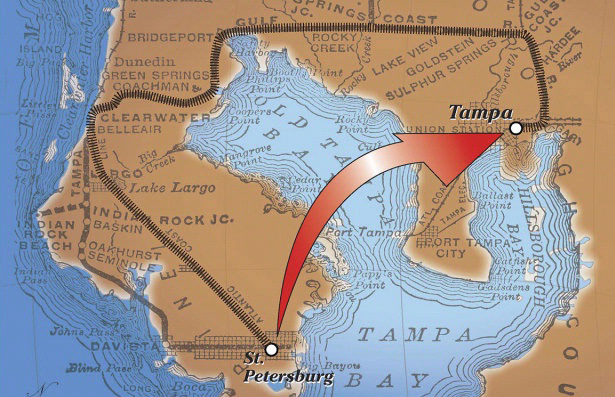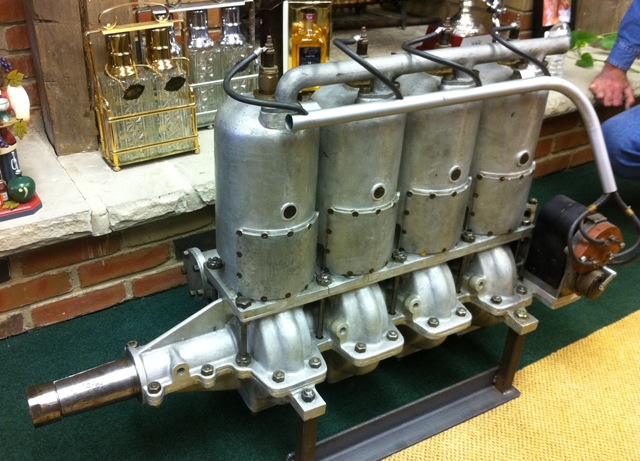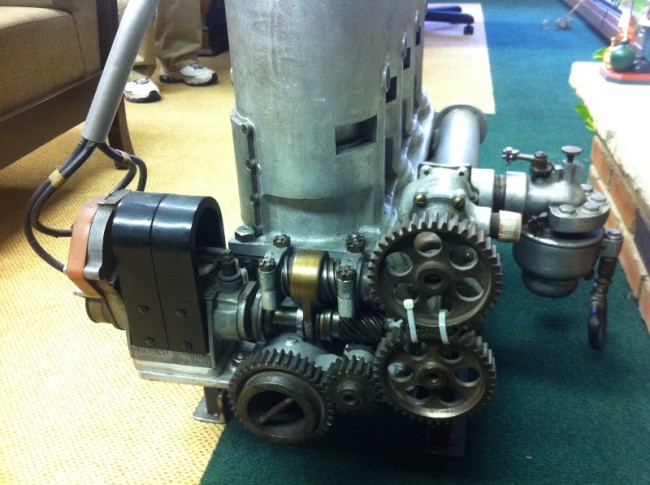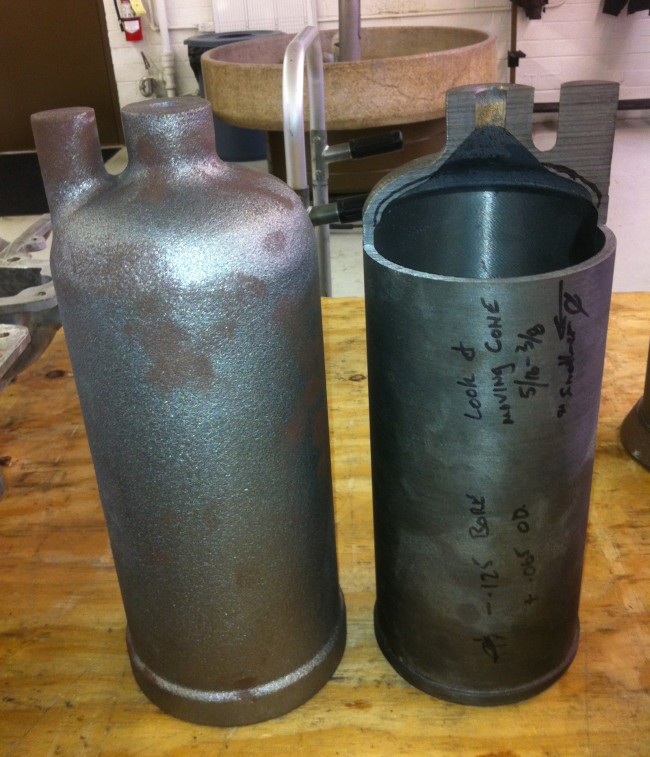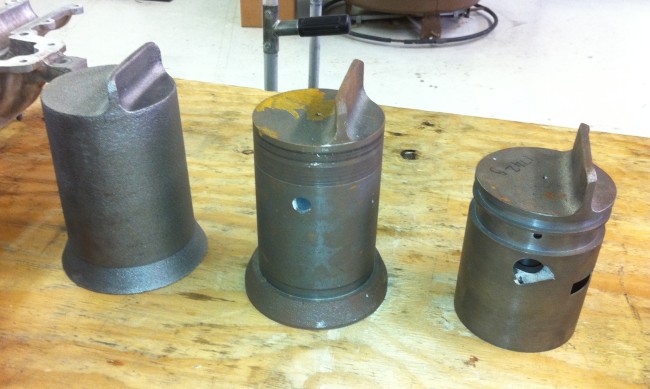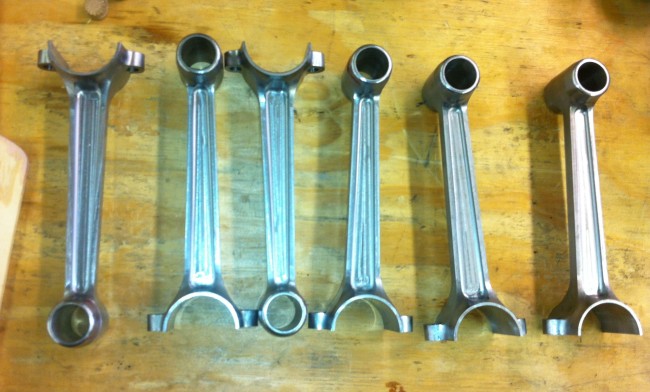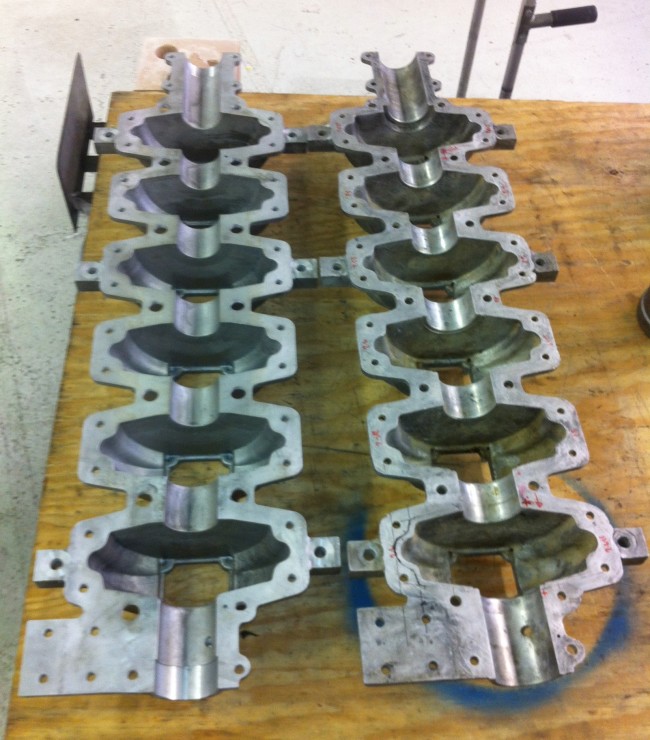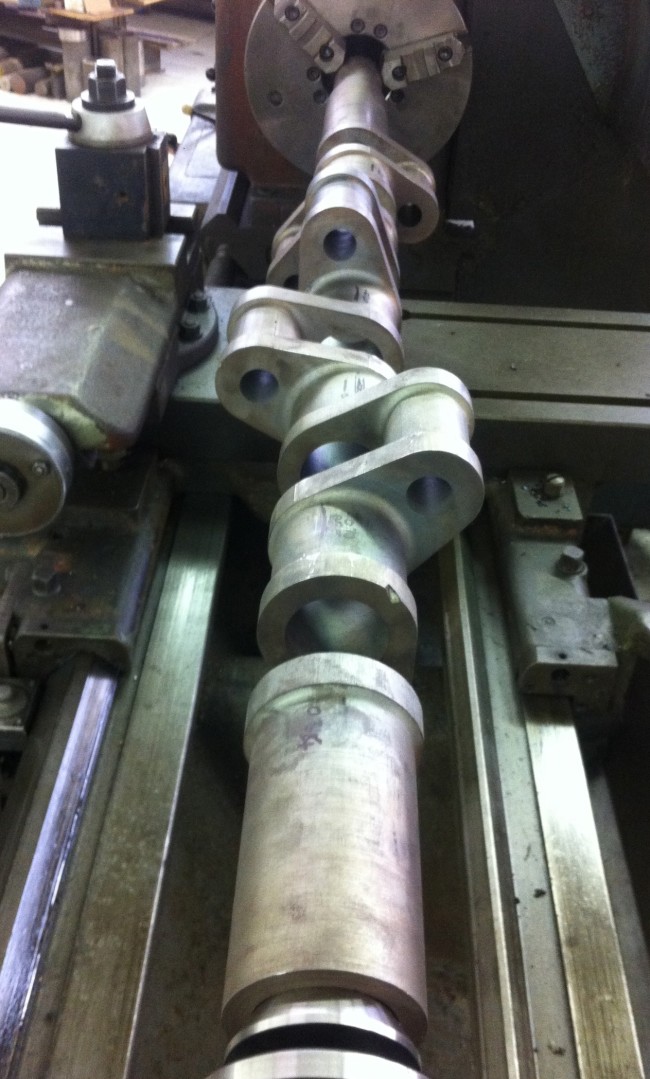We hit somewhat of a milestone last week as Ken cleared out around the Benoist hull jig in preparation for flipping it over!
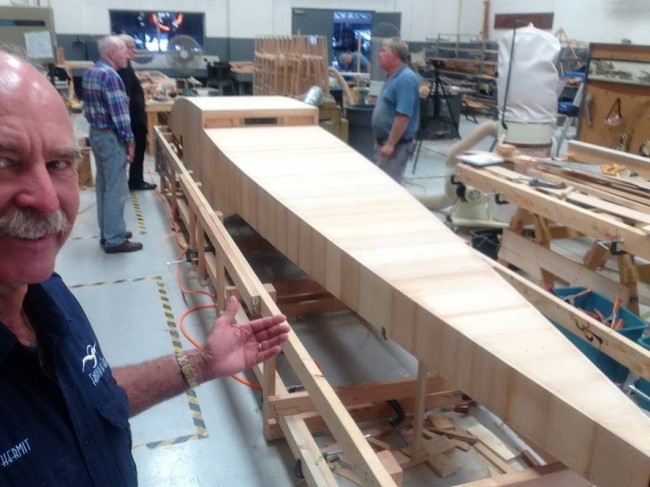
After rounding up much of the gang . . . we lifted up the hull and began to rotate it . . . trying not to break off any of the delicate pieces that still need more structure attached.
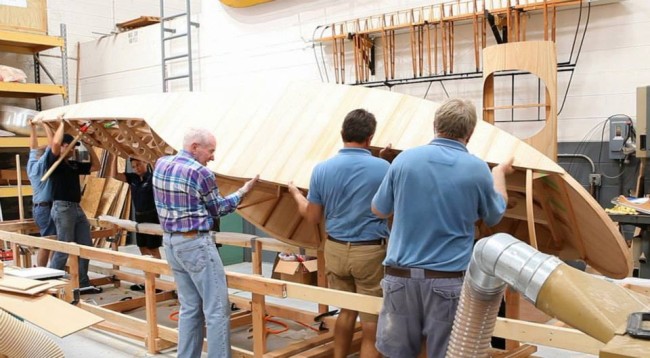
Almost there! It is not as heavy as it’s going to get as it still needs another layer of 1/4″ planking. The finished hull should weigh in at around 350 pounds.
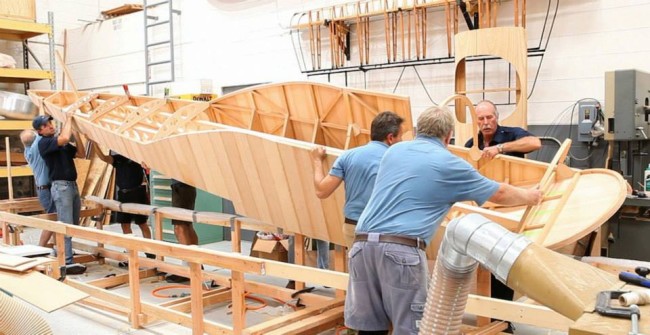
After taking out a jig piece or two . . . we finally got it to settle in right-side up!
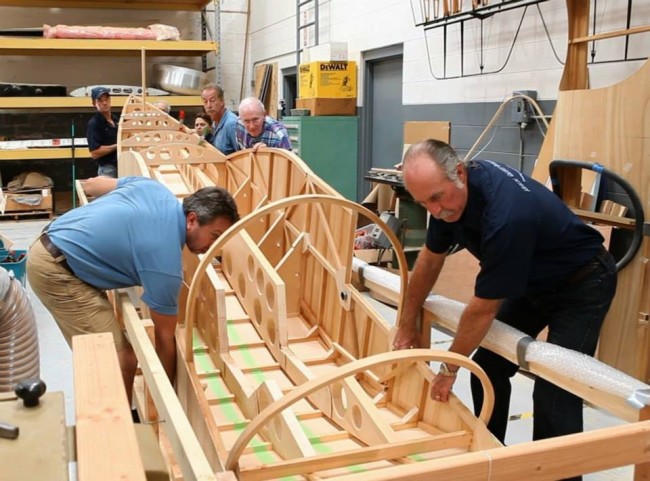
Here’s a shot from the front. Check out the two main beams going down the middle of the fuselage. The pilot seat sits on the front of the main beams while the engine sits just behind the pilot in the section without the lightening holes.
There is still a LOT of work to do on this!
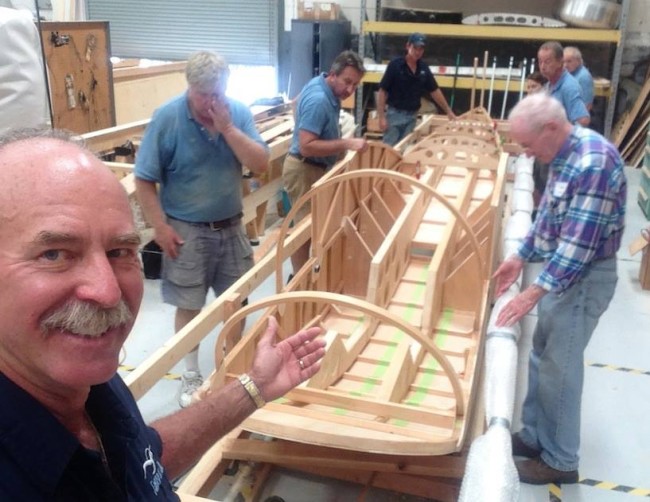
Here’s a shot from the rear.
The top deck in the back gets 1/4″ planking and once it goes on . . . there is no way to get inside, so all the wood needs to be sealed and all the control cables need to be routed.
With the fuselage section open around the engine, and from the experience of our “Lark of Duluth” friends up north, we know water will get back there so Ken’s put drain holes in the bottom of all the bulkheads to make sure we can see any water in the hull before take-off as it should all drain to the low spot under the engine.
Our bilge pump will consist of a small bucket and a sponge!

